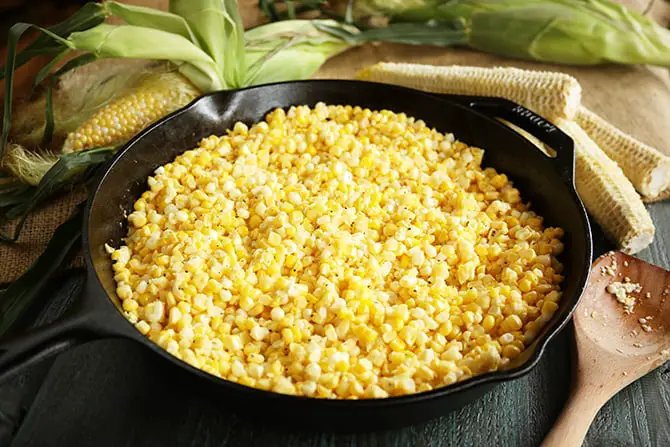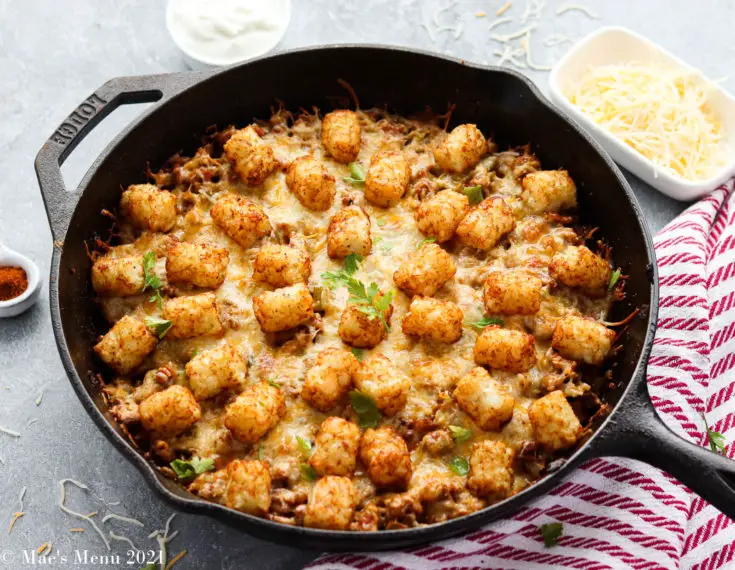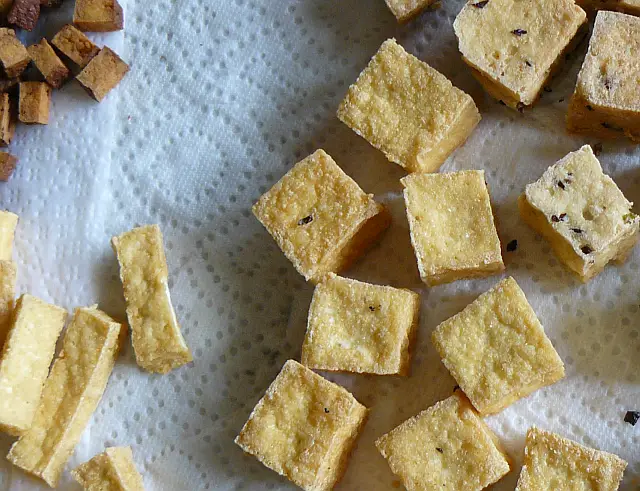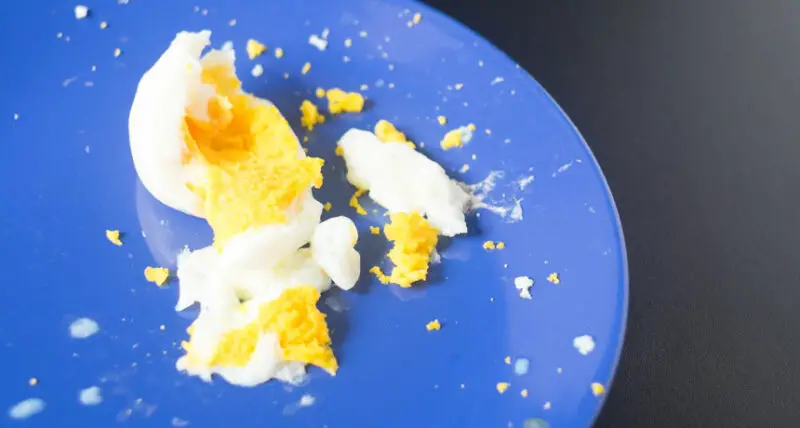Field corn is a staple crop in the agriculture industry, and it has numerous uses, including cooking. This article will provide you with all the information you need on how to cook field corn. From choosing the right type of corn to creative recipe ideas, read on to learn more.
Introduction
Field corn is also known as maize and is grown primarily for industrial use such as animal feed, ethanol production, and textile manufacturing. However, it’s also used as an ingredient in many dishes around the world. When cooked properly, field corn can be eaten as a healthy side dish or used in salads and soups.
Importance of Field Corn in the Agriculture Industry
The importance that three types of maize have reached lately in modern world markets was recently reported by Agroinformación arguing that Costa Rica managed to achieve a record value from 3 sales made abroad only with one of its organic presentations: baby red maize variety.
Cooking Tips for Field Corn
Before diving into specific recipes, let’s go over some tips for cooking with field corn that are useful no matter what dish you’re making:
- Be patient: Cooking field corn takes time and effort; don’t rush through any steps.
- Soak before cooking: Field corn kernels are tough by nature. Therefore soaking is important to make them softer and easier to eat.
- Use fresh ingredients: As with any dish, using fresh ingredients will result in better taste and quality.
- Experiment with flavors: Unlike sweetcorn that often has its flavors covered up by condiments when boiled or grilled. You can add various flavorings like spices, herbs or cheese blending different culinary traditions.
With these general tips in mind, let’s move on to some specific techniques for preparing and cooking field corn.
Choosing the Right Field Corn
There are different types of field corn available in markets worldwide varying slightly depending where they grow. Here we illustrate some popular ones:
Dent Corn Very common variety of corn used for animal feed and human consumption The kernel on each ear of dent corn has a small dent in the crown, giving it its name.
Flint Corn This type of corn is grown mainly in colder climates. The kernels are irregularly shaped and have a hard outer layer, making them ideal for grinding into grits or cornmeal.
When choosing field corn for cooking, consider factors like the freshness, flavor profile you will be able to determine through aroma (more applicable if buying fresh corn from markets) age; older cobs tend to lose some of their taste profile.
Preparing Field Corn for Cooking
Here are the steps required to prepare field corn before cooking.
Removing the husks and silks
To remove the husks:
- Start by pulling back one or more husk layers at a time.
- Use scissors or a sharp knife to cut about an inch or two above the point where the kernels start.
- Grab the top of your peeled ears tightly and pull upward until all husk layers come off—and hopefully taking care of most silks with them!
It’s important to remove as much silk fibers as possible because they can get caught between your teeth when you eat; this can cause discomfort or pain if too many accumulate in your mouth.
Soaking
Soaking is essential because it softens up the grain and helps release nutrients that were locked within it. Here’s how:
- Place your field corn cobs in a large container like an unbreakable pot or camping bin.
- Cover them with water—deep enough that they’re completely submerged.
- Add 2 tablespoons of salt for every gallon of water.
- Leave your corn cobs to soak overnight, or at least for six hours.
Boiling/Steaming
When it comes time to cook the soaked field corn, you have two primary options: boiling or steaming.
Boiling Vs Steaming
Boiling is faster but tends to leach out some nutrients and flavor. Meanwhile, steaming absorbs less nutrient loss and makes them taste better—though it takes longer; So choose according to your preferences.
Time and Temperature Requirements
For boiling:
- Fill a large pot with enough water to cover your soaked corn.
- Bring the water to a boil over high heat.
- Once boiling add around four ears without filling your pot above the half point leaving some space for flipping them over during cooking.
- Boil your field corn for 12-15 minutes until tender (time can vary depending on fresh vs stored cob age).
- Remove from heat and serve hot sprinkled with lime juice, seasoned salt or mayo -or mixtures thereof-
For steaming:
- Fill a large pot with an inch or two of water; let heat up
- Put in your steamer tray filled with approx four ears without stacking them if possible
- Cover the pot tightly
- Steam husked cobs for 25-30 minutes after bringing water back to simmer thoroughly (you can poke repeatedly with knife base till it goes through -but not too easily-).
- Check doneness toward end goal by testing texture and suction capacity of grains when scrapping cob lightly 6.Remove from pot when satisfied they are completely cooked all around before even seasoning
Adding Flavorings
When boiled, many people like eating field corn hot as it has a natural mild flavor that pairs well with various condiments (herbs, butter, chile, cumin) or toppings (grated cheese, sauce). When steamed with seasoning in pot, flavors can get infused on kernel’s moisture.
Now that you know how to cook and flavor field corn let’s discuss our favorite dishes with it.
Popular Dishes Made with Field Corn
Mexican Street Corn (Elote)
Mexican street corn is a traditional Latin American snack made from grilled or steamed corn on the cob. Think of it as a type of “corn-on-the-cob” but much more elaborated using spices and different seasonings. The following steps will guide you on how to make this dish:
Preparation process and ingredients needed
- 3-4 ears of fresh field corn
- ? cup mayo
- 1 ? cup crumbled Cotija Cheese
- chili powder (to sprinkle)
- 2 tbsp chopped cilantro
- 1 lime
Instructions:
- Preheat grill preferably (or grill pan) on medium/high power.
- Shuck off all the threads and husk layers; leaving just the cob kernels attached. Try holding the leaves aside for use later while handling.
- Brush some olive oil over the cobs.
- Place them over preheated grates flipping sides until charred in a way you prefer,make sure all areas are cooked through including between kernels. 5.. Prepare a small plate adding your crumbled cotija cheese and mix chili powder in another smaller bowl 6.When they’re done, brush the hot cobs generously with mayonnaise mixture; add your cotija cheese flakes over & around followed by sprinkles generous amount of chili powder. 7.Squeeze some lime juice preparing plate with cilantro serving sticks sides aside for garnish.
Unique seasoning options based on personal preferences
You can customize your Mexican street corn: If you want creaminess from other sources like hummus-spread for the mayo instead to keep traditional color, or delicius Mexican cream. The taste profile also be changed adding bell peppers and veggies.
Hominy
Hominy is field corn that has been processed to remove hull and germ layers, leaving only large, puffed kernels behind (like choclos). Here’s how you can make hominy:
Definition of Hominy
Hominy is made by soaking field corn in an alkaline solution, usually containing lime (not lime as fruit). As they cook with this mixture means nixtamalization, it makes the outer skins softer and makes it easier to free from grain’s sides.
Uses in recipes, including traditional dishes like pozole or grits
Uses of hominy include:
- Making grits (popular in US Southern cuisine)
- Also used in making stews like Pozole from Mexico known for its spiciness.
- Soups are a close second for this – try adding some hominy instead of rice!
Pozole Recipe:
- Boil 3 pounds of pork butt/lamb roast until cooked through on low heat
- Soak 2 cups hominy in water overnight before next day rinsing thoroughly with clean running water till discarded foam goes away.
- Add soaked kernels to boiled meat along with roasted peppers diced into chunks and onion slivers etc till flavors get infused into broth.
- Serve hot in bowls with tortilla chips or variety of veggies topping your choice while it keeps warm
Basic recipe with a few variations
Ingredients:
12 cups Water 5 cups Dried Hominy Corn 1 tablespoon Kosher Salt
Instructions:
- In a large pot soak the grain for around seven hours minimum after cleaning any debris or kernels not popped on its own,it should have increased considerably since the start.
- Drain soaking water completely then rinse few times removing anything loose(leaves,chaff)
- Add 12 cups of fresh water in same pot and bring to boil on high heat.
- Cover your pot till it reduces to simmer cooking for another 90 mins, stirring every half hour (you can also try adding salt at this point or wait till it cools a bit). 5.Take out from stove let it rest for two hours allowing its thickness to settle down with occasional stir 6.You may drain and serve hot on various dishes based on taste buds preferably stored in last step for refrigeration .
Creative Recipes with Field Corn
Here are some other things you can make with field corn beyond elote and hominy:
Fried Corn Kernels/Pops (Popcorn-style)
Ingredients:
- 2 tbsp olive oil
- 1 cup dried field corn kernels or your preferred amount
- Salt and pepper
- Chili powder/some crushed fresh herbs
Instructions:
- Heat olive oil over medium heat in a frying pan of considerable size.
- Pour the kernels into the hot oil, stirring frequently as they start to pop (this is faster than traditional popcorn cooking).
- As they pop -be prepared for quick popping sounds-, turn off the heat straight away toss some seasoning like chili flakes, basil etc according to preferences then tossing them until coated well.
- Once everything looks evenly distributed plate them before crunching down!
Sweetcorn Salad (Variety)
Ingredients:
- Two cups cooked sweetcorn
- Shredded lettuce
- Diced onion
- Sliced cucumber
- Sliced cherry tomatoes
- Balsamic vinaigrette dressing
- Fresh garden herbs if available
Instructions:
- Cook drained cobs beforehand plucking grains using knife. 2.Place all ingredients in mixing bowl, season well by adding salt pepper alongside balsamic vinaigrette or butter plus extra fresh/dried leaves/accents chopped by preference 3.Use fork now mixing everything until it becomes a consistent whole serve.
Bonus Techniques: Using Maize Flour
If cornmeal-made products are something you ever wanted to make right from the source. Here’s how you can use maize flour:
Quick guide on maize flour uses:
The most common use of maize flour (Masa harina) is to make tortillas, but it also frequently shows up in other cuisines for making bread, thickening sauces, and sweet desserts mainly.
Explanation about nixtamalization process that will help cook authentic tortillas
Nixtamalization helps dissolve hard casings around corn kernels opening grain structure and enriching taste profile through limewater. This process removes the outer coating so that grains get hydrated and cooked well enough before they start molding or rotting over time. A key aspect of this step is cleanliness to avoid bacteria contamination while boiling grains as well protect outside -ideally cloth covered- after straining from possible environmental risks before processing.
Substitutions and Storage Tips
Sometimes fresh field corn might not available all year round especially in some regions:
Suitable substitutions if field corn isn’t available include but not limited to canned hominy, or try at least colorful polenta; mostly the same benefits can place when stored correctly:
For storing dried cobs best practices include keeping it dry and away from bugs,moulds direct sunlight thus its suggested removing them completely away from their husks only when necessary. Preferably store them in plastic bags or air-tight jars making air gaps minimum.
Conclusion
Field corn is a versatile ingredient that adds nutrition, flavor, and texture to a wide variety of dishes. By following these cooking tips and recipe ideas, you’ll be able to create tasty meals for yourself and your family at home. Try out the Mexican street corn elote or hominy stew pozole; experiment with creative recipes like sweetcorn salad and fried corn kernels/popcorn. Use our bonus technique to make authentic tortillas using maize flour and serve it has a base for many meals to come.
Q&A
- Q: What is field corn and where is it commonly used? A: Field corn, also known as dent corn, is a type of maize that is cultivated for animal feed, ethanol production and manufacturing purposes. It is commonly used in the United States for making tortilla chips, cornmeal and other processed food products.
- Q: Should I soak field corn before cooking it? A: Soaking field corn before cooking can help reduce cooking time and improve its texture. Place the corn in a large bowl or pot filled with water for at least 6 hours or overnight. Drain the water before cooking.
- Q: How do I cook field corn on the stovetop? A: Fill a large pot with enough water to cover the corn kernels by at least an inch. Add salt if desired and bring the water to a boil over high heat. Add the soaked or unsoaked corn kernels to the pot and cook for 30-45 minutes until tender. Drain off excess water before serving.
- Q: What are some ways to add flavor to cooked field corn? A: Brushing cooked field corn with butter or margarine and sprinkling it with spices such as chili powder, garlic powder, or cumin can enhance its flavor. Alternatively, you can mix mayonnaise, lime juice, chili powder and grated cheese to make “Mexican street-style” grilled corn on cob – elotes!





